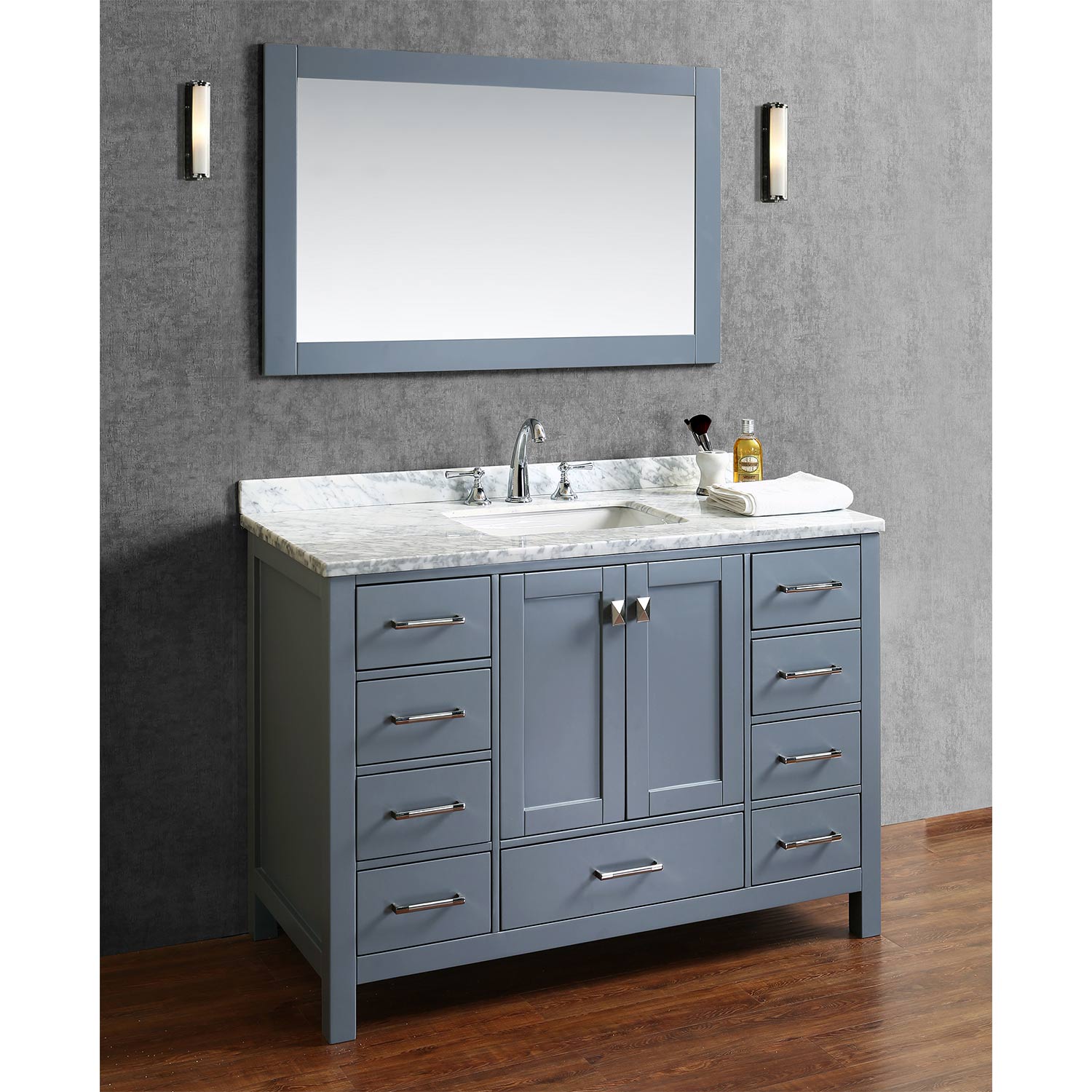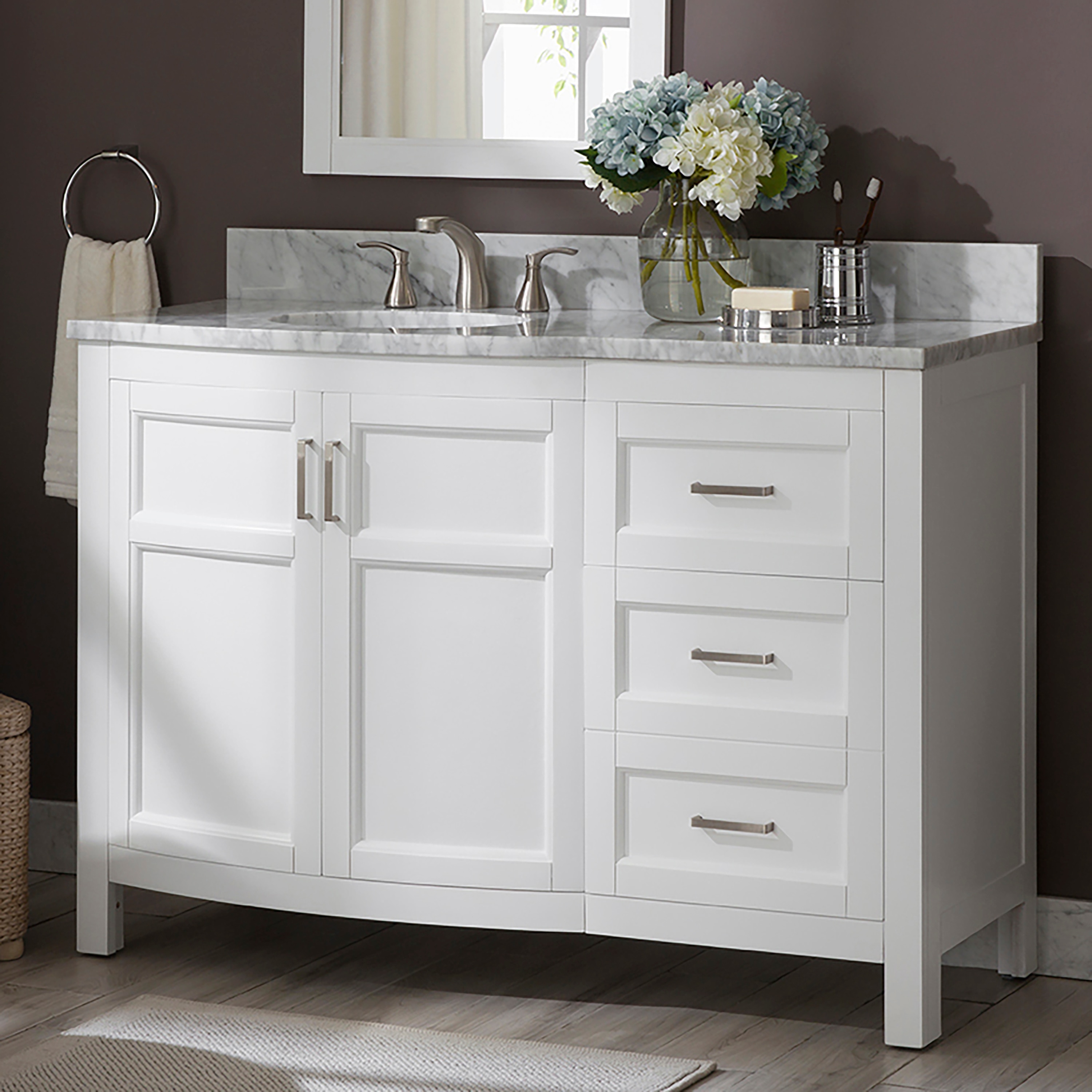Types of Bathroom Vanity Cabinets: Cabinets That Sit On Bathroom Vanity

Bathroom vanity cabinets are an essential part of any bathroom, providing storage and style. Choosing the right vanity cabinet can be a daunting task, as there are many different styles, materials, and finishes to choose from. This guide will help you navigate the different types of bathroom vanity cabinets, allowing you to make an informed decision.
Styles of Bathroom Vanity Cabinets
The style of your bathroom vanity cabinet should complement the overall design of your bathroom. Here are some popular styles:
- Traditional: Traditional vanity cabinets often feature ornate details, such as carvings, moldings, and raised panels. They are typically made from solid wood, such as oak or cherry, and finished with a rich stain or paint. These cabinets are perfect for bathrooms with a classic, elegant feel.
- Modern: Modern vanity cabinets are characterized by clean lines, minimalist details, and sleek finishes. They are often made from materials like stainless steel, glass, or high-gloss laminate. Modern vanity cabinets are perfect for contemporary bathrooms with a minimalist aesthetic.
- Contemporary: Contemporary vanity cabinets share some similarities with modern styles but often incorporate more organic shapes and textures. They may feature materials like wood, metal, or stone, and are finished in neutral colors or bold accents. Contemporary vanity cabinets are a great option for bathrooms that are both stylish and functional.
- Farmhouse: Farmhouse vanity cabinets are known for their rustic charm and natural materials. They often feature distressed wood, exposed hardware, and simple designs. Farmhouse vanity cabinets are perfect for bathrooms with a cozy, country feel.
Materials Used for Bathroom Vanity Cabinets
The material of your vanity cabinet will affect its durability, style, and price. Here are some common materials:
- Wood: Wood is a popular choice for vanity cabinets, as it is durable, beautiful, and can be finished in a variety of ways. Common wood species used for vanity cabinets include oak, cherry, maple, and walnut. Solid wood vanity cabinets are typically more expensive than those made from other materials.
- Laminate: Laminate is a more affordable option than wood, and it is available in a wide range of colors and finishes. Laminate vanity cabinets are durable and easy to clean, making them a good choice for busy bathrooms. However, laminate is not as scratch-resistant as wood, and it may not be as aesthetically pleasing.
- Marble: Marble is a luxurious and elegant material that can add a touch of sophistication to any bathroom. Marble vanity cabinets are durable and resistant to heat and scratches. However, marble is also porous and can be susceptible to staining. It is important to seal marble countertops and vanity tops regularly to prevent staining.
Finishes for Bathroom Vanity Cabinets
The finish of your vanity cabinet will affect its overall appearance and style. Here are some common finishes:
- Painted: Painted vanity cabinets are available in a wide range of colors, allowing you to create a unique look for your bathroom. Painted cabinets can be either glossy or matte, depending on your preference.
- Stained: Stained vanity cabinets enhance the natural beauty of the wood. Stains come in a variety of colors and shades, allowing you to create a rustic, modern, or classic look.
- Distressed: Distressed vanity cabinets have a worn, aged look that adds character and charm to a bathroom. Distressed cabinets are often made from reclaimed wood or wood that has been intentionally distressed to create a vintage feel.
Table of Bathroom Vanity Cabinet Styles, Materials, and Finishes
| Style | Material | Finish |
|---|---|---|
| Traditional | Solid wood (oak, cherry) | Stained, painted |
| Modern | Stainless steel, glass, laminate | High-gloss, matte |
| Contemporary | Wood, metal, stone | Neutral colors, bold accents |
| Farmhouse | Distressed wood | Stained, painted, distressed |
Features and Functionality of Bathroom Vanity Cabinets

Bathroom vanity cabinets are more than just storage solutions; they are integral to the functionality and aesthetics of a bathroom. Their design and features play a crucial role in creating a comfortable and efficient space for daily routines.
Common Features and Functionality
Bathroom vanity cabinets typically incorporate a combination of drawers, shelves, and doors, each designed to serve specific storage and organizational needs.
- Drawers: These provide concealed storage for items like toiletries, medications, and personal care products. The drawers can be shallow or deep, depending on the size and intended use. Some drawers may be equipped with dividers or organizers to maximize space and maintain order.
- Shelves: Open shelves offer easy access to frequently used items, such as towels, decorative items, or baskets for smaller items. They are ideal for showcasing decorative items and adding visual interest to the vanity area.
- Doors: Cabinets with doors provide enclosed storage, keeping items hidden and out of sight. They are particularly useful for storing less frequently used items or items that need to be protected from dust or moisture.
Cabinet Configurations
Bathroom vanity cabinets come in various configurations to suit different bathroom layouts and needs.
- Single-Sink Vanities: These are the most common type, featuring a single sink and a single cabinet unit. They are suitable for smaller bathrooms or for individuals with limited storage needs.
- Double-Sink Vanities: Ideal for larger bathrooms or couples, these vanities offer two sinks and a larger cabinet unit. They provide ample storage and allow for simultaneous use by multiple people.
- Corner Vanities: Designed to fit into corners, these vanities make optimal use of space in smaller bathrooms. They often have a single sink and a smaller cabinet unit, but they can be customized with additional shelves or drawers for increased storage.
Features and Functionality Table
| Feature | Functionality |
|---|---|
| Drawers | Concealed storage for toiletries, medications, and personal care products. |
| Shelves | Open storage for towels, decorative items, and frequently used items. |
| Doors | Enclosed storage for less frequently used items or items that need protection. |
| Single-Sink Vanity | Suitable for smaller bathrooms or individuals with limited storage needs. |
| Double-Sink Vanity | Ideal for larger bathrooms or couples, providing ample storage and simultaneous use. |
| Corner Vanity | Space-saving solution for smaller bathrooms, often with a single sink and smaller cabinet. |
Considerations for Choosing Bathroom Vanity Cabinets

Choosing the right bathroom vanity cabinet is crucial for both functionality and aesthetics. It’s an investment that should be carefully considered, factoring in your bathroom’s size, style, and budget.
Size and Dimensions
The first step in choosing a bathroom vanity cabinet is to determine the available space in your bathroom. Measure the width, depth, and height of the area where you plan to install the vanity. Remember to consider the location of plumbing fixtures, doors, and other obstacles.
It’s important to leave at least 18 inches of clearance in front of the vanity for comfortable movement.
You can then use these measurements to determine the ideal size for your vanity cabinet.
Tips for Measuring Bathroom Space
- Measure the width of the wall where the vanity will be placed, making sure to account for any obstructions like windows or doors.
- Measure the depth of the space, taking into account any protruding fixtures like toilets or showers.
- Measure the height of the space, taking into account the floor and ceiling height, as well as any existing fixtures.
Recommendations for Vanity Cabinet Dimensions
| Considerations | Tips | Recommendations |
|---|---|---|
| Small Bathroom | Choose a compact vanity with a smaller footprint. | Consider a vanity with a width of 24 inches or less. |
| Large Bathroom | Choose a vanity with ample storage space. | Consider a vanity with a width of 60 inches or more. |
| Limited Depth | Choose a vanity with a shallow depth. | Consider a vanity with a depth of 18 inches or less. |
Style and Design, Cabinets that sit on bathroom vanity
The style of your bathroom vanity cabinet should complement the overall design of your bathroom. Consider the existing fixtures, flooring, and colour scheme.
Tips for Matching Cabinet Style to Bathroom Design
- If your bathroom has a modern design, consider a vanity with clean lines, sleek finishes, and minimalist hardware.
- For a traditional bathroom, opt for a vanity with ornate details, decorative hardware, and classic finishes.
- If your bathroom has a farmhouse aesthetic, consider a vanity with rustic wood finishes, distressed hardware, and a simple design.
Budget
Bathroom vanity cabinets come in a wide range of prices, depending on the materials, features, and brand. Set a budget before you start shopping to avoid overspending.
Tips for Finding a Vanity Cabinet within your Budget
- Consider pre-made vanity cabinets from big box stores or online retailers, which are often more affordable than custom-made vanities.
- Shop around and compare prices from different retailers before making a purchase.
- Consider purchasing a vanity cabinet with a simpler design and fewer features, which can help to keep the cost down.
